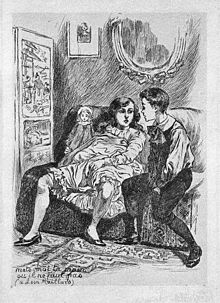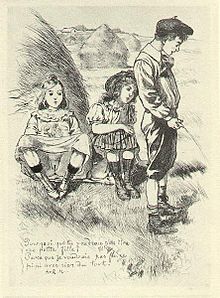
Human sexual activity, human sexual practice or human sexual behaviour is the manner in which humans experience and express their sexuality. People engage in a variety of sexual acts, ranging from activities done alone to acts with another person in varying patterns of frequency, for a wide variety of reasons. Sexual activity usually results in sexual arousal and physiological changes in the aroused person, some of which are pronounced while others are more subtle. Sexual activity may also include conduct and activities which are intended to arouse the sexual interest of another or enhance the sex life of another, such as strategies to find or attract partners, or personal interactions between individuals. Sexual activity may follow sexual arousal.

Sexual orientation is an enduring personal pattern of romantic attraction or sexual attraction to persons of the opposite sex or gender, the same sex or gender, or to both sexes or more than one gender. Patterns are generally categorized under heterosexuality, homosexuality, and bisexuality, while asexuality is sometimes identified as the fourth category.

Adolescence is a transitional stage of physical and psychological development that generally occurs during the period from puberty to adulthood. Adolescence is usually associated with the teenage years, but its physical, psychological or cultural expressions may begin earlier or end later. Puberty typically begins during preadolescence, particularly in females. Physical growth and cognitive development can extend past the teens. Age provides only a rough marker of adolescence, and scholars have not agreed upon a precise definition. Some definitions start as early as 10 and end as late 30. The World Health Organization definition officially designates an adolescent as someone between the ages of 10 and 19.

The field of psychology has extensively studied homosexuality as a human sexual orientation. The American Psychiatric Association listed homosexuality in the DSM-I in 1952, but that classification came under scrutiny in research funded by the National Institute of Mental Health. That research and subsequent studies consistently failed to produce any empirical or scientific basis for regarding homosexuality as anything other than a natural and normal sexual orientation that is a healthy and positive expression of human sexuality. As a result of this scientific research, the American Psychiatric Association removed homosexuality from the DSM-II in 1973. Upon a thorough review of the scientific data, the American Psychological Association followed in 1975 and also called on all mental health professionals to take the lead in "removing the stigma of mental illness that has long been associated" with homosexuality. In 1993, the National Association of Social Workers adopted the same position as the American Psychiatric Association and the American Psychological Association, in recognition of scientific evidence. The World Health Organization, which listed homosexuality in the ICD-9 in 1977, removed homosexuality from the ICD-10 which was endorsed by the 43rd World Health Assembly on 17 May 1990.
The Rind et al. controversy was a debate in the scientific literature, public media, and government legislatures in the United States regarding a 1998 peer reviewed meta-analysis of the self-reported harm caused by child sexual abuse (CSA). The debate resulted in the unprecedented condemnation of the paper by both chambers of the United States Congress. The social science research community was concerned that the condemnation by government legislatures might have a chilling effect on the future publication of controversial research results.

A dysfunctional family is a family in which conflict, misbehavior, and often child neglect or abuse on the part of individual parents occur continuously and regularly. Children that grow up in such families may think such a situation is normal. Dysfunctional families are primarily a result of two adults, one typically overtly abusive and the other codependent, and may also be affected by substance abuse or other forms of addiction, or sometimes by an untreated mental illness. Parents having grown up in a dysfunctional family may over-correct or emulate their own parents. In some cases, the dominant parent will abuse or neglect their children and the other parent will not object, misleading a child to assume blame.

Child abuse is physical, sexual, emotional and/or psychological maltreatment or neglect of a child, especially by a parent or a caregiver. Child abuse may include any act or failure to act by a parent or a caregiver that results in actual or potential wrongful harm to a child and can occur in a child's home, or in organizations, schools, or communities the child interacts with.
Gender variance or gender nonconformity is behavior or gender expression by an individual that does not match masculine or feminine gender norms. A gender-nonconforming person may be variant in their gender identity, being transgender or non-binary, or they may be cisgender. In the case of transgender people, they may be perceived, or perceive themselves as, gender-nonconforming before transitioning, but might not be perceived as such after transitioning. Transgender adults who appear gender-nonconforming after transition are more likely to experience discrimination.
Sexual abuse or sex abuse, also referred to as molestation, is abusive sexual behavior by one person upon another. It is often perpetrated using force or by taking advantage of another. Molestation often refers to an instance of sexual assault against a small child, whereas sexual abuse is a term used for a persistent pattern of sexual assaults.
Sibling abuse includes the physical, psychological, or sexual abuse of one sibling by another. More often than not, the younger sibling is abused by the older sibling. Sibling abuse is the most common of family violence in the US, but the least reported. As opposed to sibling rivalry, sibling abuse is characterized by the one-sided treatment of one sibling to another.
Adolescent sexuality is a stage of human development in which adolescents experience and explore sexual feelings. Interest in sexuality intensifies during the onset of puberty, and sexuality is often a vital aspect of teenagers' lives. Sexual interest may be expressed in a number of ways, such as flirting, kissing, masturbation, or having sex with a partner. Sexual interest among adolescents, as among adults, can vary greatly, and is influenced by cultural norms and mores, sex education, as well as comprehensive sexuality education provided, sexual orientation, and social controls such as age-of-consent laws.
Childhood trauma is often described as serious adverse childhood experiences (ACEs). Children may go through a range of experiences that classify as psychological trauma; these might include neglect, abandonment, sexual abuse, emotional abuse, and physical abuse, witnessing abuse of a sibling or parent, or having a mentally ill parent. These events have profound psychological, physiological, and sociological impacts and can have negative, lasting effects on health and well-being such as unsocial behaviors, attention deficit hyperactivity disorder (ADHD), and sleep disturbances. Similarly, children whose mothers have experienced traumatic or stressful events during pregnancy have an increased risk of mental health disorders and other neurodevelopmental disorders.

The questioning of one's sexual orientation, sexual identity, gender, or all three is a process of exploration by people who may be unsure, still exploring, or concerned about applying a social label to themselves for various reasons. The letter "Q" is sometimes added to the end of the acronym LGBT ; the "Q" can refer to either queer or questioning.
Child-on-child sexual abuse is a form of child sexual abuse in which a prepubescent child is sexually abused by one or more other children or adolescents, and in which no adult is directly involved. While this includes when one of the children uses physical force, threats, trickery or emotional manipulation to elicit cooperation, it also can include non-coercive situations where the initiator proposes or starts a sexual act that the victim does not understand the nature of and simply goes along with, not comprehending its implications or what the consequences might be.
Child sexual abuse (CSA), also called child molestation, is a form of child abuse in which an adult or older adolescent uses a child for sexual stimulation. Forms of child sexual abuse include engaging in sexual activities with a child, indecent exposure, child grooming, and child sexual exploitation, such as using a child to produce child pornography.

The relationship between the environment and sexual orientation is a subject of research. In the study of sexual orientation, some researchers distinguish environmental influences from hormonal influences, while other researchers include biological influences such as prenatal hormones as part of environmental influences.

Siblings play a unique role in one another's lives that simulates the companionship of parents as well as the influence and assistance of friends. Because siblings often grow up in the same household, they have a large amount of exposure to one another, like other members of the immediate family. However, though a sibling relationship can have both hierarchical and reciprocal elements, this relationship tends to be more egalitarian and symmetrical than with family members of other generations. Furthermore, sibling relationships often reflect the overall condition of cohesiveness within a family.
The media and American adolescent sexuality relates to the effect the media has on the sexuality of American adolescents and the portrayal thereof.
Adverse childhood experiences (ACEs) include childhood emotional, physical, or sexual abuse and household dysfunction during childhood. The categories are verbal abuse, physical abuse, contact sexual abuse, a battered mother, household substance abuse, household mental illness, incarcerated household members, and parental separation or divorce. The experiences chosen were based upon prior research that has shown to them to have significant negative health or social implications, and for which substantial efforts are being made in the public and private sector to reduce their frequency of occurrence. Scientific evidence is mounting that such adverse childhood experiences (ACEs) have a profound long-term effect on health. Research shows that exposure to abuse and to serious forms of family dysfunction in the childhood family environment are likely to activate the stress response, thus potentially disrupting the developing nervous, immune, and metabolic systems of children. ACEs are associated with lifelong physical and mental health problems that emerge in adolescence and persist into adulthood, including cardiovascular disease, chronic obstructive pulmonary disease, autoimmune diseases, substance abuse, and depression.

A juvenile sex crime is defined as a legally proscribed sexual crime committed without consent by a minor under the age of 18. The act involves coercion, manipulation, a power imbalance between the perpetrator and victim, and threats of violence. The sexual offenses that fall under juvenile sex crimes range from non-contact to penetration. The severity of the sexual assault in the crime committed is often the amount of trauma and/or injuries the victim has suffered. Typically within these crimes, female children are the majority demographic of those targeted and the majority of offenders are male. Juvenile sex offenders are different than adult sex offenders in a few ways, as captured by National Incident Based Reporting System: they are more likely to be committed in school, offend in groups and against acquaintances, target young children as victims, and to have a male victim, whereas they are less likely than their adult counterpart to commit rape.








